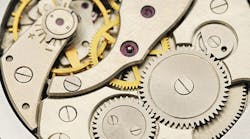Conditioned by recent marketing efforts, here’s what comes to mind when one hears the term reliability: physical assets, reliability engineering terms such as mean-time-between-failure, and maintenance. But does the reliability of an organization rely solely on reliable physical assets? Granted, asset reliability is essential, but is it really a maintenance issue and is it the only factor required for acceptable plant performance?
It’s a myth that maintenance creates or controls reliability. In truth, maintenance struggles just to maintain the inherent design reliability of plant assets and to stay ahead of the premature damage resulting from improper operating practices and unrealistic demands imposed by management. Why, then, do so many people think that reliability is a maintenance issue?
Perhaps it is because asset-related failures show up as downtime and corrective actions as maintenance costs. The misconception is that the sole cause of downtime and incurred maintenance cost is a deficiency in the maintenance function. This is not true. Remember the old saying: “One operator can destroy an asset faster than 10 technicians can repair it.” Even world-class, flawless maintenance performance cannot assure reliability of the critical assets. There are just too many non-maintenance factors that determine the reliability of plant assets. Maintenance has a critical role in reliability but it is only one small part of operational or organizational reliability.
Let’s assume for a minute that physical asset reliability is the most important aspect of a successful organization. What factors or functions must be in place to assure reliability? First and foremost, the asset must be properly designed for its intended application. If this is accomplished, management, marketing and operations must limit demands on the assets to their design parameters. At least 27% of all asset reliability issues are the direct result of operating outside its acceptable operating envelope. If the first two requirements are met, other conditions must follow:
- Operators must universally and constantly follow recommended operating procedures, e.g., setup, startup and shutdown.
- Materials management and procurement must provide suitable raw or in-process materials.
- Human resources provide requisite skills training.
- First-line supervisors must enforce best practices.
If all of these are consistently followed, there is a reasonable possibility—not probability—that the plant’s physical asset will be reliable, but are reliable physical assets enough?
In a business context, reliability is much more than reliable physical assets. Variability and instability, the opposite of reliability, is the greatest sources of reliability problems faced by organizations today. How can one expect reliability when the means and methods used to identify, plan, schedule and execute business activities and work are infinite variables where everyone does it their own way—often in a complete vacuum. This problem exists in the boardroom, on the factory floor and everywhere in between. This chaotic mode of operation, combined with faulty information and aversion to conflicts, makes it easier to ignore the true meaning of organizational reliability and pin our lack of reliability on maintenance—after all, they do not fight back.
Variability and instability, the opposite of reliability, is the greatest sources of reliability problems faced by organizations today.
From an organizational viewpoint reliability means that the organization is reliable, not just its physical assets. The only way to ensure a reliable organization is to standardize business processes—at all levels—so that consistent, repeatable performance is the only acceptable norm. Reliability is, and must be treated as, a holistic organizational issue where all functions and all employees, from the CEO to the newest hire on the factory floor, have critical roles to play. Unless or until consistency throughout the organization becomes the norm—becomes a part of its DNA—reliability is not possible.
In closing, let me dispel one final myth about reliability. The prevailing opinion that reliability is difficult to achieve and prohibitively expensive is simply not true. While there are programs of every shape, size and description promising to be the solution to your reliability problem for a hefty price, reliability should not have any incremental cost. In fact, it will reduce your current operating costs. The solution is simple. Define best-practice processes and procedures that govern all recurring activities within your organization—you should have them already—and then enforce them.
The only hard part is undoing the bad habits that we all have let take over our corporate culture. Change must start at the top and spread throughout the organization—excluding no one—until everyone universally adheres to standard practices that support the business plan, eliminate waste and effectively utilize installed capacity.
Keith Mobley has earned an international reputation as one of the premier consultants in the fields of organizational performance optimization, reliability engineering and effective change management. He has more than 50 years of direct experience in corporate management, process optimization, and reliability engineering. For the past 25 years, he has helped hundreds of clients worldwide achieve and sustain world-class performance. Keith can be reached at [email protected].



